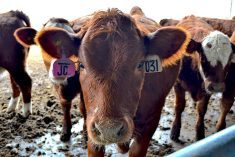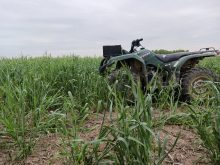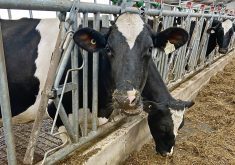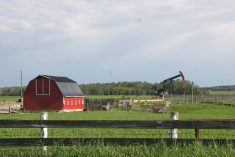staff |banff
Horses are everywhere in Banff. On the town’s main strip, they clip-clop along pulling carriages full of tourists while a stream of cars, buses and motorcycles roar past. On the banks of the Bow River, they gently amble along while a guide in an oilskin slicker and cowboy hat keeps careful watch. And up in the back country, accompanied by covered wagons and strings of pack mules, they take tours lasting up to six days in the wilderness of Banff National Park.
Read Also
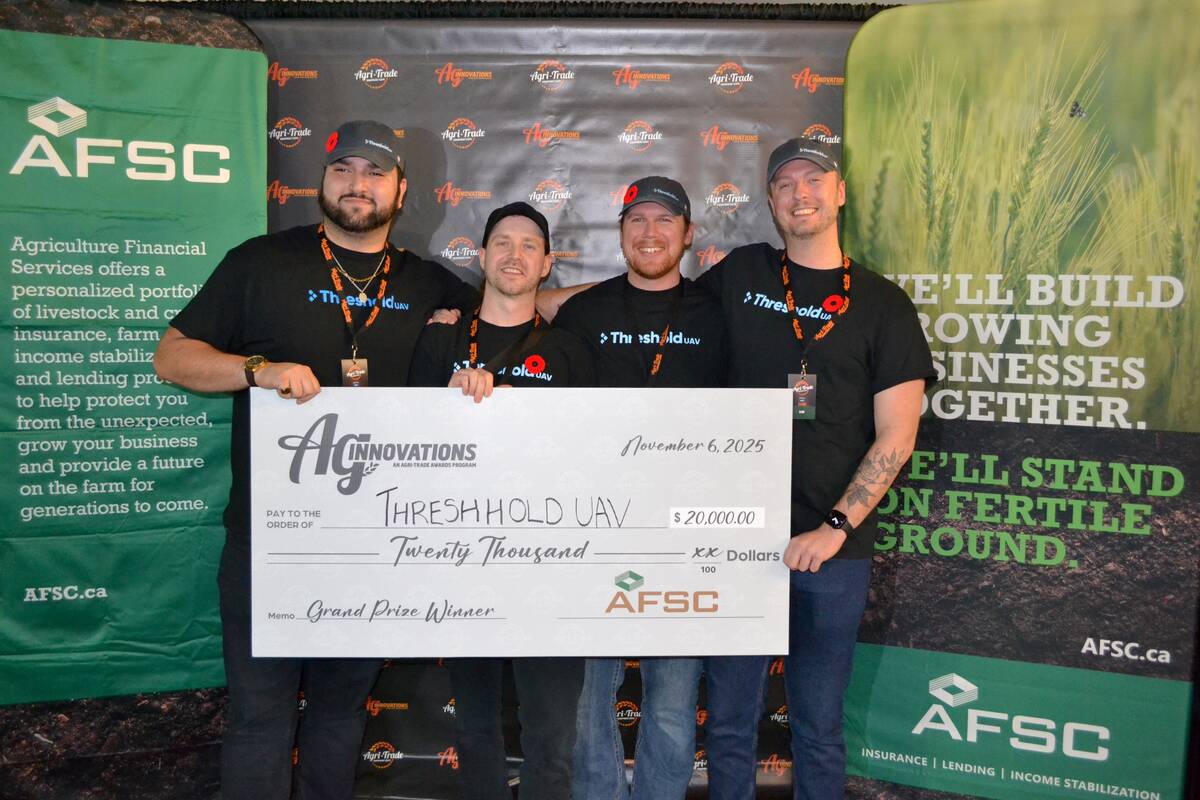
Swarm mapping the future of drone imagery
Calgary-based Threshold UAV wins the $20,000 top prize at Ag Innovation Awards for their swarm drone mapping.
Virtually all of them belong to Cochranebased Warner Guiding and Outfitting, which has some 270 horses and 90 mules in their operation, according to barn boss Troy Locke.
There are two keys to running a successful equine tourism operation, said Locke, who has worked for owner Ron Warner for four years.
The first is to use only calm, relaxed animals that are perfectly trained.
A quick look around at the dozens of horses in the sprawling corrals and outdoor stalls shows them all standing quietly, heads down, dozing in a Zen-like state of utter tranquillity.
No four-legged females allowed
Look closer, and you’ll see that every single horse is a gelding.
“We don’t own even one mare,” said Locke. “We’ve got some molly mules, but they never come around or cause any trouble. It’s just way better without them.”
With no girls around, there’s no reason for the geldings to get snippy or proud, and they generally mind their own business on the trails. That’s important with inexperienced riders, who might never have seen a horse up close before, much less ridden one.
The second secret to success is having a bulletproof legal waiver to protect the operation from litigation-happy lawyers, and lots of insurance.
Nobody is allowed onto the carriages or onto a horse’s back – or even on a pony lead – without first signing a liability waiver.
“Our waiver is a good one. It cost a lot of money for lawyers to get it written up. I always tell the Americans that the waiver is just for them,” he said, with a laugh.
The extended back-country tours are organized on various themes, from the Mules &Mountains expedition featuring mule clinician Brad Cameron, to an interpretive tour of grizzly bear country.
Led by former Parks Canada warden Mike Gibeau with 30 years of experience with grizzlies, the tour works because for whatever reason, the giant bears seem to get along better with humans on horseback.
Working mules
Mules do the heavy lifting on the pack trips into the mountains, carrying guest gear and supplies on overnight holidays on horseback.
Prior to joining the Warner Ranch, Locke didn’t have much experience with mules, he said. But working with “old long-ears” has made him a believer.
Mules can be bought for as little as $300 per head, and contrary to popular belief, they aren’t any more stubborn than a horse.
“I’d rather ride a mule than a horse now. They’re smoother. They learn quick. They’re fast. Better than a horse,” said Locke.
“We’ll take a mule that’s never been packed and put a pack on them and they’ll just go to work. Put some shoes on them and they’re gone to work the next day.”
Apart from wagon rides in the mountains, the draft horses are used to pull the operation’s four carriages for rides downtown and for weddings and special events.
The horses, which work up to six-hours a day, are supplemented with lentil-based protein pellets and up to one square bale of timothy hay per day. Regular work and careful feeding keeps the horses trim and fit, said Locke. Even then, some will get thin. In such cases, they are given a few weeks rest.
All the horses get winters off, and are pastured at the ranch in Cochrane. The combination of honest work and rest helps the horses live longer, he said. Some of their stock is pushing 30 and still useful.
They break all their drafts the old-fashioned way. After getting them familiar with the harness, new animals are hitched up to a steel-framed hayrack with the Colonel, a 2,000-pound, 14-year-old Belgian whose favourite word is “whoa.”
Graduated training
Then they go solo, taking long drives downtown to get them used to traffic, especially buses with their spook-inducing hissing doors and brakes.
“We just drive them around, introduce them to the traffic. That’s all we can do,” said Locke. “Some of them make it, some of them don’t.”
Kayla Bishop, 20, has been ferrying tourists around the sights of Banff as a summer job for two years now as she works on her environmental management/ agriculture degree.
Each horse goes on 10 to 15 rides in a six-hour day. Fares are $16 per person for a 15-minute ride, $30 for half an hour, and $150 for the deluxe, one-hour tour (for up to four people).
“At home I ride horses, but I never drove a horse until I came out here,” said Bishop, who grew up on an Ontario farm and started on a dude ranch in nearby Kananaskis before joining Warner.
“It’s been a great experience. I love driving now,” said Bishop who makes $9 an hour plus tips.
“Banff is expensive, so you live off your tips. If you work hard, talk to your customers and entertain them, it pays. Banff is so nice, you can talk about it for hours.”
———
“Wedon’townevenonemare.”
Troy Locke
barn boss



